In this tutorial, you’ll learn how to build an automatic night light circuit that turns on when it gets dark. It’s a simple circuit that you can build on a breadboard.
This circuit shows you how to do it with an LED. But you can use the same principle to turn on bigger and brighter lights too.
Find the breadboard diagram and parts list below the video.
The Components You’ll Need
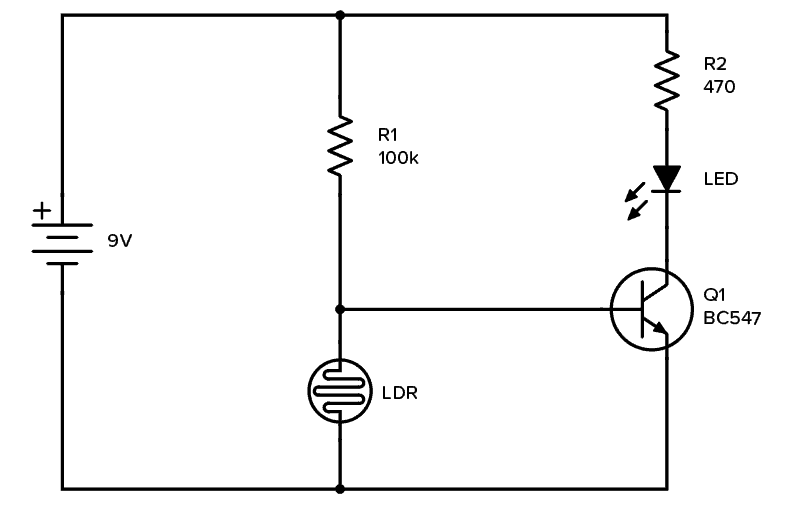
- 9V Battery
- Breadboard
- Photoresistor (around 5kΩ in light, 200kΩ or more in dark)
- Transistor BC547
- Resistor 100 kΩ
- Resistor 470 Ω
- Light-Emitting Diode (LED)
There are many ways to connect this circuit. I recommend using a breadboard since it’s quick and you can easily reuse components.
Below you can see how I connected this circuit on a breadboard:
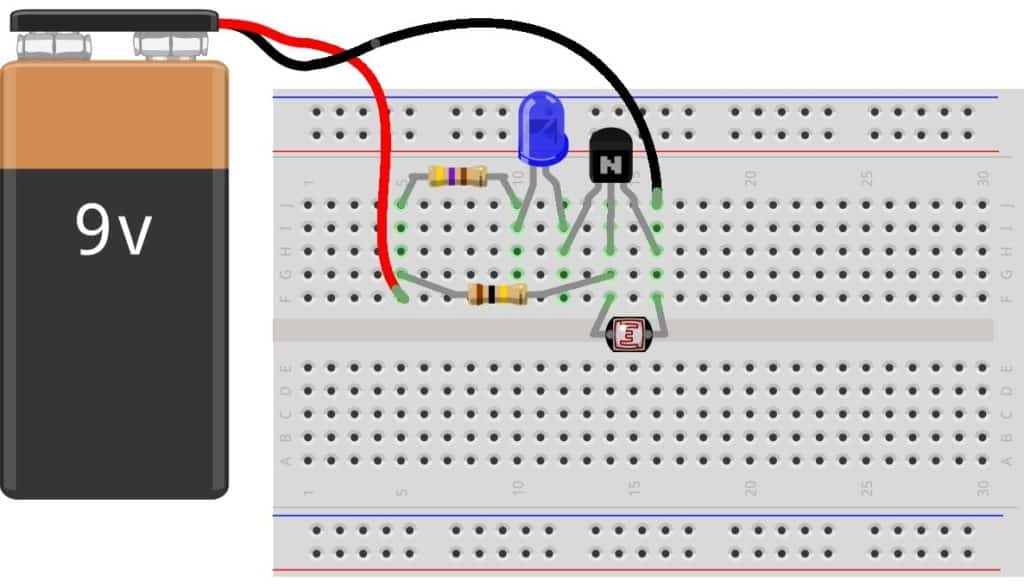
How The Night Light Circuit Works
The photoresistor and the 100 kΩ resistor make up a voltage divider.
When there is a lot of light, the photoresistor will have low resistance, which means the voltage divider gives a low output voltage. So the transistor is off and cuts off the current to the LED. Which means no light.
When it’s dark, the photoresistor will have high resistance. That means the voltage divider gives a high output voltage which turns on the transistor. That means the LED is also on and will light up.
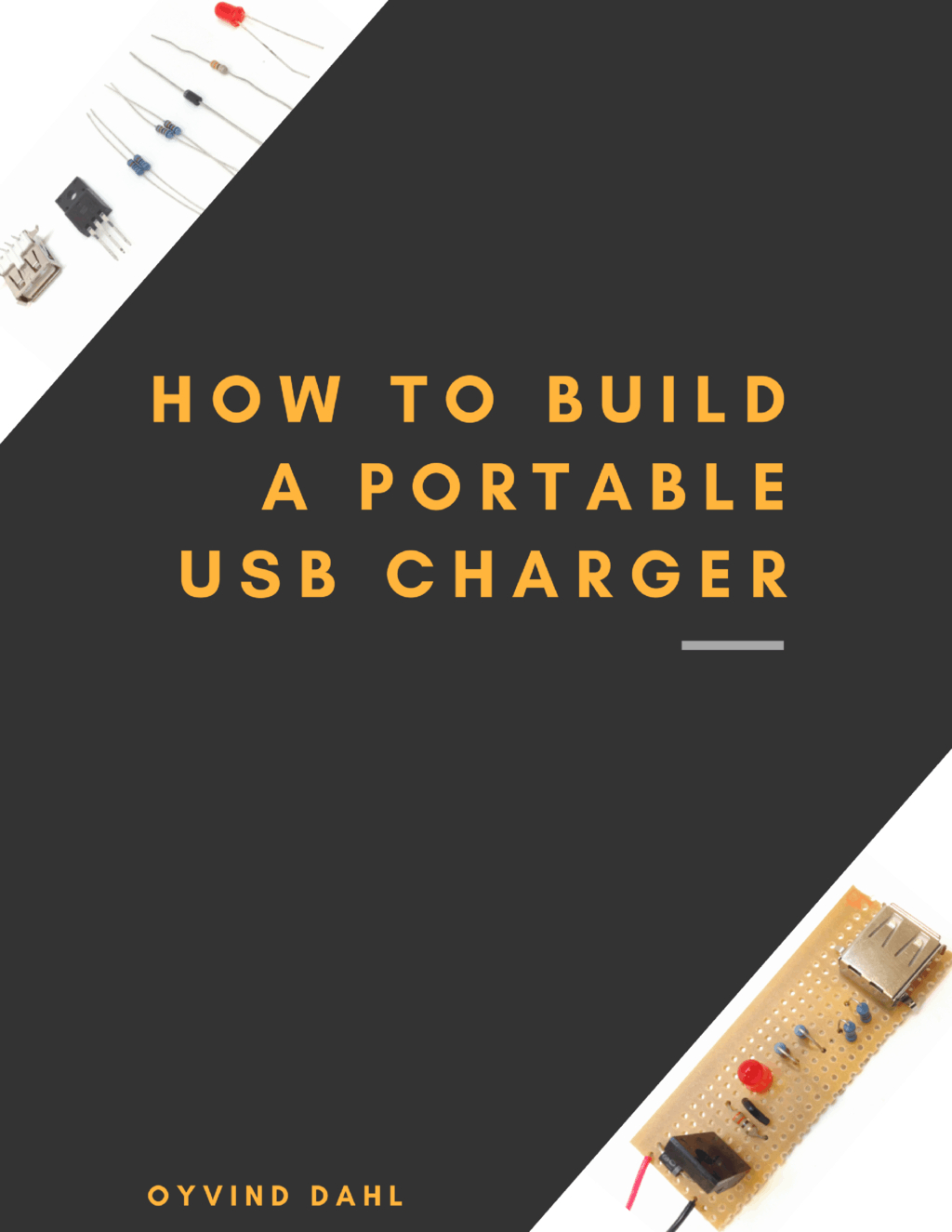
Build Something Practical This Evening
Download this tutorial that shows you step by step how to build an old-school USB charger for your mobile.
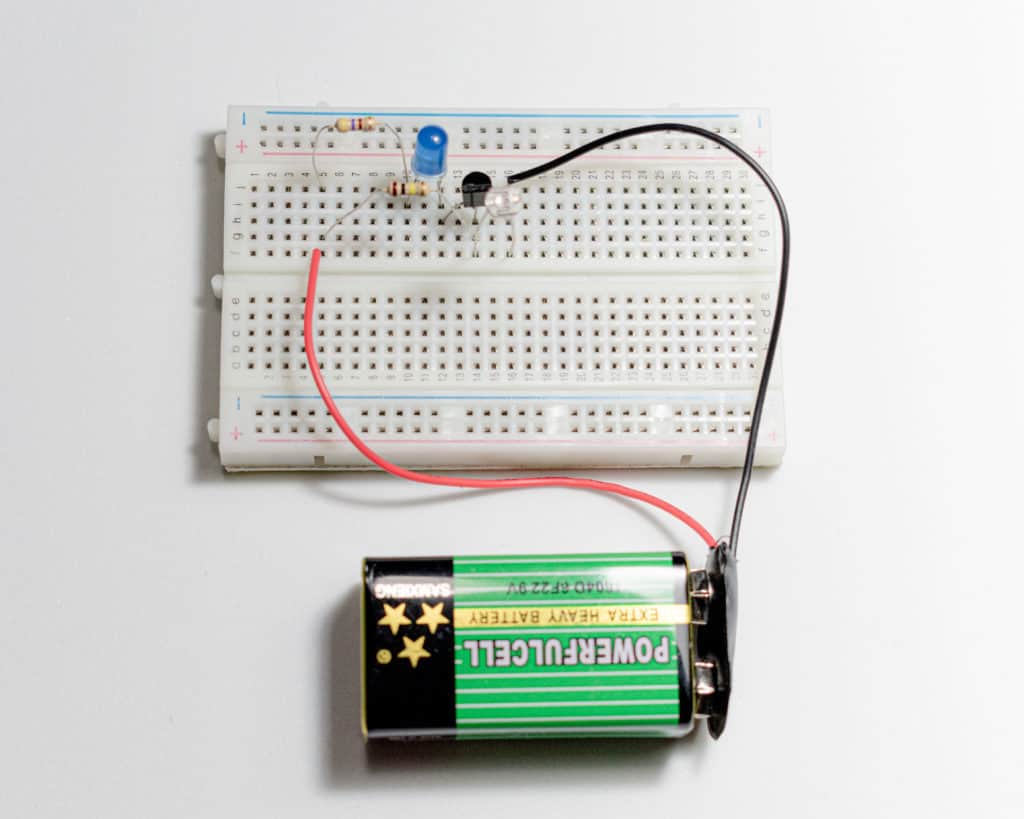
What Are the Voltages out From the Voltage Divider?
When it’s light and the photoresistor value is low, the output from the voltage divider is around 0.5V, which is not enough to turn on the transistor.
When it’s dark and the photoresistor value is high, the output from an unconnected voltage divider would be around 4.5V.
But since the output of the voltage divider is connected on the base of the transistor, the voltage will be limited by the forward voltage of the base-emitter connection (around 0.7V).
Questions?
Did you build the night light circuit? Do you have any questions about how it works or how to build it? Let me know in the comment section below.
More Circuits & Projects Tutorials
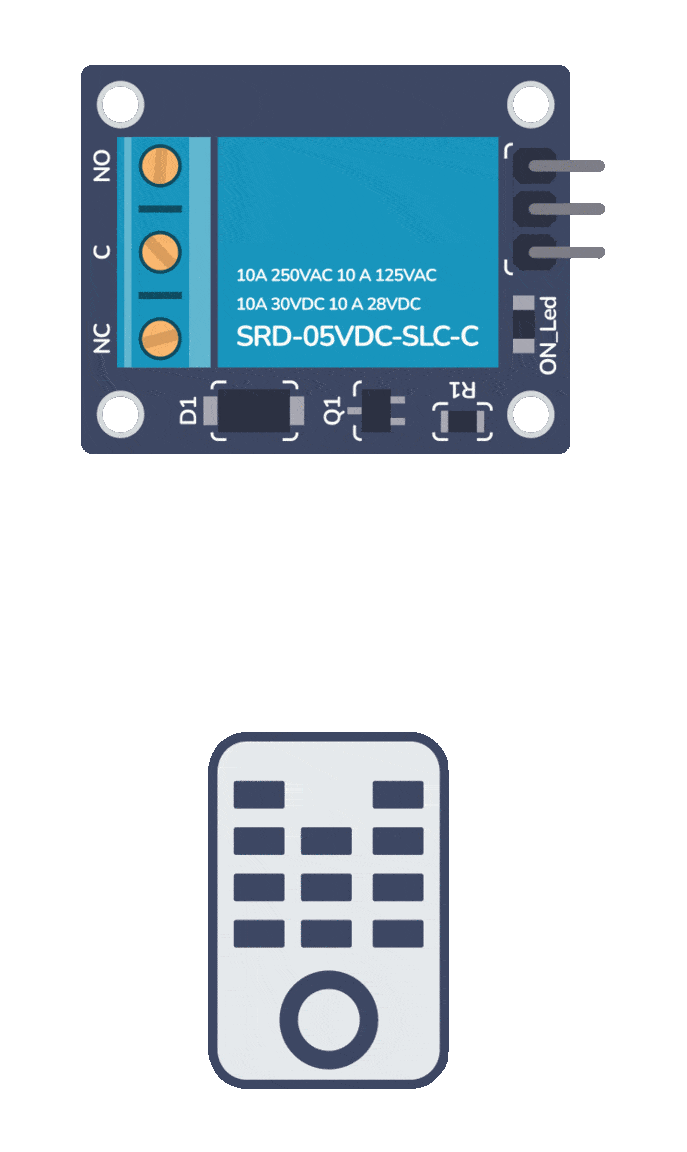
Build Something Useful This Evening
This gadget lets you use any IR remote-control to control your lamp, garden lights, heater oven, garage door, or anything else.
